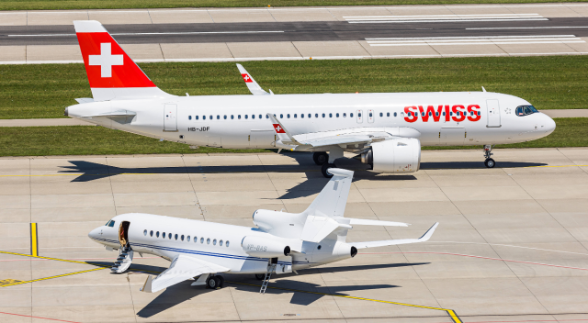The Federal Council sets out its aviation policy guidelines in Switzerland's aviation policy report (LUPO). The first such report was adopted in 2004. The current LUPO dates from 2016. Switzerland requires international connections to European and global centres. To this end, a safe, efficient and reliable aviation infrastructure is central to the public interest. As set out in the Federal Council's strategy on the issue, the environmental, economic and social dimensions of sustainability must be respected in the development of Swiss aviation. The safety level of Swiss aviation, which is high by European standards, should be maintained and further improved with proportionate measures, as far as possible.
In 2019, the Federal Council adopted a target of net-zero greenhouse gas emissions for Switzerland by 2050. As stated in Switzerland's Long-Term Climate Strategy, this means that international air transport from Switzerland in 2050 should, as far as possible, no longer cause any climate-impacting emissions, i.e. there should be net-zero fossil carbon emissions. The remaining climate impacts of air transport should decrease or be offset with other measures. The FOCA is involved in national and international efforts to achieve the climate targets.
Through its participation in the ICAO and EU bodies, as well as through the conclusion of air transport agreements, the FOCA co-determines the development of international aviation law, ensures Switzerland's connections with worldwide destinations and gives the Swiss industry access to the European market.






